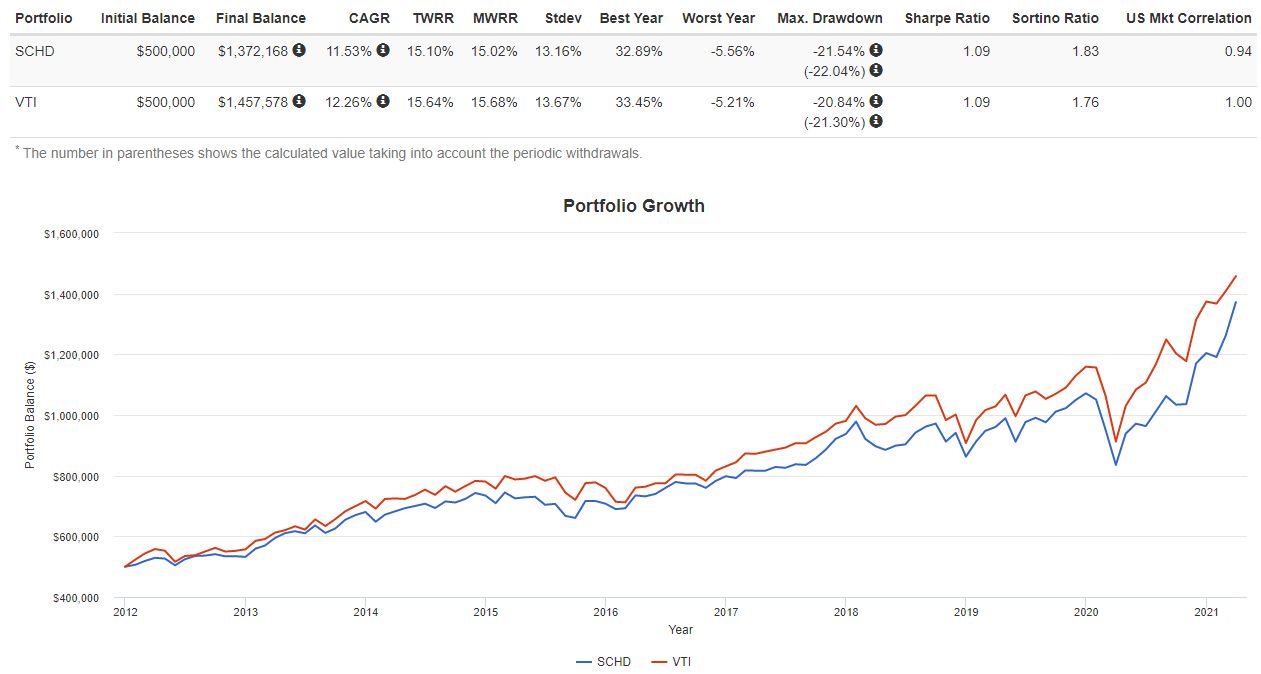

Finance
When Do I Need To Recertify Student Loans
Published: January 19, 2024
Learn about when you need to recertify your student loans and stay on top of your finances. Discover important steps to ensure your loan remains in good standing.
(Many of the links in this article redirect to a specific reviewed product. Your purchase of these products through affiliate links helps to generate commission for LiveWell, at no extra cost. Learn more)
Table of Contents
- Introduction
- Understanding Student Loan Recertification
- The Importance of Recertifying Student Loans
- When is Recertification Required?
- Types of Student Loans that Require Recertification
- Recertification Deadlines and Timelines
- Consequences of Not Recertifying Student Loans
- The Recertification Process: Step by Step
- Tips for a Smooth Recertification Process
- Final Thoughts
Introduction
Student loans play a crucial role in helping millions of students access higher education. Whether you’re pursuing a bachelor’s degree, a master’s degree, or a professional certification, student loans can provide the financial support needed to make your educational dreams a reality.
However, managing student loans is not only about borrowing the funds; it also involves various obligations and responsibilities, including the process of recertification. Recertifying your student loans is a critical step that ensures the accuracy of your loan information and ensures that you remain eligible for certain benefits.
In this article, we will explore the importance of recertifying student loans, when recertification is required, the various types of loans that require recertification, the consequences of not recertifying, and the step-by-step process of recertification. By understanding the recertification process and staying on top of your obligations, you can navigate the world of student loans with confidence and ease.
Understanding Student Loan Recertification
Student loan recertification is a process that borrowers must go through to confirm and update their income-driven repayment plans (IDRs). An IDR is a repayment plan based on the borrower’s income and family size, allowing them to make affordable monthly payments based on their financial circumstances.
Recertification ensures that your monthly payment amount reflects your current income and family size. It also reassesses your eligibility for loan forgiveness programs and other benefits tied to your repayment plan. By recertifying your student loans, you can avoid any potential payment discrepancies and maintain the benefits associated with your chosen IDR.
The recertification process typically involves submitting updated financial information and paperwork to your loan servicer. This ensures that your loan servicer has accurate records of your income and can calculate your new monthly payment amount based on the latest financial information.
It’s important to note that recertification is an annual requirement for most income-driven repayment plans. Failure to recertify your student loans in a timely manner can lead to payment shock, where your monthly payment amount increases significantly, causing financial strain. It can also result in the loss of eligibility for loan forgiveness programs and other benefits tied to your IDR.
In the next sections, we will dive deeper into when recertification is required, the specific types of student loans that require recertification, and the consequences of not recertifying your loans.
The Importance of Recertifying Student Loans
Recertifying your student loans is crucial for several reasons. It ensures that your monthly payment amount is accurate and based on your current income and family size. It also allows you to remain eligible for various benefits tied to your income-driven repayment plan (IDR).
One of the key benefits of recertification is that it prevents payment shock. If you fail to recertify your loans, your monthly payment amount may not accurately reflect your financial situation. As a result, your payment could increase significantly, causing financial hardship. By recertifying regularly, you can ensure that your monthly payment remains affordable and manageable.
Recertification is also essential for maintaining eligibility for loan forgiveness programs. Many IDR plans offer the potential for loan forgiveness after a certain number of qualifying payments. By recertifying your loans, you continue to stay on track for meeting the criteria for loan forgiveness. Failure to recertify can result in losing eligibility for these valuable forgiveness programs.
Additionally, recertification allows you to take advantage of any changes in your financial circumstances. If your income decreases or your family size increases, recertification can help lower your monthly payment amount, making it more affordable. Conversely, if your income increases, recertification ensures that your payments reflect your improved financial situation.
Recertifying your student loans is also essential for staying up to date with any changes in the loan repayment landscape. The government regularly updates income-driven repayment plans and associated benefits. By recertifying, you can remain informed and ensure that you are making the most of the available options.
Overall, recertifying your student loans is vital for maintaining accurate payment amounts, staying eligible for loan forgiveness programs, and adapting to changes in your financial circumstances. It is a proactive step that allows you to manage your student loans effectively and avoid any potential financial difficulties in the future.
When is Recertification Required?
The frequency of recertification depends on the type of income-driven repayment plan you have and the requirements set by your loan servicer. Typically, recertification is required on an annual basis. However, it’s crucial to check with your loan servicer or review the terms of your specific repayment plan to determine the exact timeframe.
For most borrowers, the recertification process begins approximately 90 days before the anniversary date of their initial income-driven repayment plan application or their most recent recertification. This timeline gives borrowers ample time to gather the necessary documents and complete the recertification process before their current payment plan expires.
It’s essential to be proactive and plan ahead for recertification. Loan servicers usually send reminders through email or postal mail when it’s time to recertify your loans. However, it’s wise to mark the recertification deadline on your calendar and prepare in advance to avoid any delays or missed deadlines.
If you fail to recertify your loans by the required deadline, your loan servicer may switch your repayment plan to the Standard Repayment Plan. This plan does not take into account your income or family size, and the monthly payment amount is typically higher than the payments under income-driven repayment plans.
Keep in mind that different types of loans may have different recertification requirements. For example, if you have Federal Family Education Loans (FFEL) or Perkins Loans, you may need to consolidate them into a Direct Consolidation Loan to be eligible for certain income-driven repayment plans. Consolidation may also trigger a recertification requirement.
Understanding the recertification timeline and requirements for your specific student loans is crucial for maintaining the benefits of your income-driven repayment plan. By staying aware of the deadlines and initiating the recertification process in a timely manner, you can ensure the smooth continuation of your repayment plan and avoid any potential consequences.
Types of Student Loans that Require Recertification
Recertification is typically required for federal student loans that are enrolled in income-driven repayment plans. These plans include:
- Income-Based Repayment Plan (IBR): This plan caps your monthly payment at a percentage of your discretionary income, which is recalculated annually based on your income and family size.
- Income-Contingent Repayment Plan (ICR): With this plan, your monthly payment is based on either 20% of your discretionary income or the amount you would pay on a 12-year fixed repayment plan, adjusted according to your income.
- Pay As You Earn Repayment Plan (PAYE): This plan sets your monthly payment at 10% of your discretionary income, calculated yearly based on your income and family size.
- Revised Pay As You Earn Repayment Plan (REPAYE): Similar to PAYE, this plan calculates your monthly payment at 10% of your discretionary income, but there are no income eligibility requirements.
It’s important to note that not all federal student loans are eligible for these income-driven repayment plans. Direct Loans, including Direct Subsidized Loans, Direct Unsubsidized Loans, Direct PLUS Loans, and Direct Consolidation Loans, are generally eligible for these plans.
On the other hand, Federal Family Education Loans (FFEL) and Perkins Loans may require consolidation into a Direct Consolidation Loan to be eligible for income-driven repayment plans and subsequent recertification.
Private student loans, which are funded by private lenders, do not typically offer income-driven repayment plans or require recertification. The terms and conditions for private student loans vary widely, and borrowers should contact their private loan servicer directly for information on repayment options and recertification requirements, if applicable.
It’s crucial to review your loan documents or contact your loan servicer to determine the specific types of student loans you have and their eligibility for income-driven repayment plans and recertification. Understanding your loan types and repayment options will ensure that you fulfill the necessary recertification obligations and receive the benefits tied to your specific loans.
Recertification Deadlines and Timelines
Recertification deadlines and timelines for student loans vary based on several factors, including the type of repayment plan and the specific requirements set by your loan servicer. It’s essential to understand the specific deadlines and initiate the recertification process well in advance to avoid any potential issues or disruptions to your repayment plan.
Typically, the recertification process can begin as early as 90 days before the anniversary date of your initial application or your most recent recertification. This timeline gives borrowers ample time to gather the necessary documents, complete the recertification forms, and submit them to their loan servicer.
Loan servicers often send reminders through email or postal mail when it’s time to recertify your loans. These notifications typically contain detailed instructions and the specific deadline for completing the recertification process.
It’s crucial to carefully review the recertification deadlines specified by your loan servicer and mark them on your calendar. Being proactive and initiating the recertification process ahead of time can help you avoid any potential delays or missed deadlines.
Additionally, it’s important to note that recertification requirements may differ based on the specific income-driven repayment plan you are enrolled in. Some plans may require annual recertification, while others may have different recertification cycles, such as once every two years.
To ensure that you meet the recertification deadline, it’s recommended that you gather the necessary documents and complete the recertification paperwork at least a month before the specified deadline. This timeframe allows for any unforeseen delays or complications that may arise during the process.
If you fail to recertify your loans by the required deadline, your loan servicer may switch your repayment plan to the Standard Repayment Plan. This default plan does not consider your income or family size, and the monthly payment amount is typically higher than the payments under income-driven repayment plans.
By staying aware of the recertification deadlines and timelines, you can ensure a seamless continuation of your income-driven repayment plan and maintain the benefits associated with it. Planning ahead and being proactive with recertification will help you avoid any potential disruptions and maintain control over your student loan repayment.
Consequences of Not Recertifying Student Loans
The consequences of not recertifying your student loans can have a significant impact on your repayment plan and overall financial well-being. Failing to fulfill the recertification requirements can result in various negative outcomes, including:
- Payment Shock: One of the primary consequences of not recertifying is experiencing a sudden increase in your monthly payment. Without accurate income information, your loan servicer may switch your repayment plan to the Standard Repayment Plan, which does not consider your income or family size. As a result, your monthly payment can skyrocket. This payment shock can strain your finances and make it difficult to meet your repayment obligations.
- Loss of Benefits: Recertification is necessary to maintain eligibility for benefits tied to income-driven repayment plans. These benefits can include affordable monthly payments, potential loan forgiveness after a certain number of qualifying payments, and interest subsidies. Failing to recertify can result in losing access to these benefits, which can have long-term financial consequences.
- Accrued Interest: If you fail to recertify your loans, your loan servicer may capitalize any unpaid interest that has accumulated while you were in the income-driven repayment plan. Capitalizing interest means adding it to the principal balance, which can increase the total amount you owe and result in higher overall interest costs over the life of your loan.
- Loss of Enrollment Status: Students who are currently enrolled in school and taking advantage of in-school deferment for their student loans may lose their enrollment status if they do not recertify. This can lead to the immediate repayment of the loan and the loss of any deferment or grace period benefits.
- Damage to Credit Score: Failing to recertify and subsequently defaulting on your student loans can have a severe impact on your credit score. Late or missed payments can negatively affect your creditworthiness, making it challenging to secure future loans, mortgages, or even employment opportunities.
It’s important to understand that the consequences of not recertifying your student loans can have far-reaching implications. To avoid these negative outcomes, it’s crucial to proactively stay on top of the recertification process and ensure that you meet the deadlines and requirements set by your loan servicer. By fulfilling your recertification obligations, you can maintain the benefits of your income-driven repayment plan and avoid any potential financial hardships.
The Recertification Process: Step by Step
The recertification process for student loans may vary slightly depending on your loan servicer, but generally, it involves the following steps:
- Review Notification: Keep an eye out for notifications from your loan servicer regarding the upcoming recertification deadline. These notifications are typically sent via email or postal mail and will provide instructions and details about the recertification process.
- Gather Required Documents: Gather the necessary documents for recertification, which typically include income verification documents such as pay stubs, tax returns, or documentation of benefits received. Check with your loan servicer to ensure you have the correct documentation.
- Complete the Application: Access the recertification application form provided by your loan servicer. Fill out the form accurately, providing updated information about your income, family size, and any changes in your financial circumstances.
- Submit the Application: Submit the completed recertification application and any required supporting documents to your loan servicer. Pay attention to the submission methods specified by your loan servicer, which may include online submission, mail, or fax.
- Confirmation and Verification: Once your recertification application is submitted, you will receive confirmation from your loan servicer. They will review your application and verify the information provided. This process may take some time, so it’s important to submit your application well before the deadline.
- Receive Updated Repayment Plan: After your recertification application is processed and approved, your loan servicer will provide you with an updated repayment plan. This plan will reflect your current income and family size, ensuring that your monthly payments remain affordable and aligned with your financial situation.
- Review and Sign: Carefully review the updated repayment plan provided by your loan servicer. Make sure you understand the terms and conditions, as well as any changes from your previous plan. If you agree with the updated plan, sign and return any required documentation to finalize the recertification process.
- Monitor Future Deadlines: Once you have successfully completed the recertification process, be sure to monitor future recertification deadlines. Stay organized and set reminders to ensure that you continue to recertify your loans in a timely manner to avoid any disruptions to your repayment plan.
It’s essential to follow the recertification process diligently and provide accurate information to your loan servicer. Any errors or delays in the recertification process can have consequences such as payment shock or loss of benefits. By staying on top of the recertification process, you can maintain the benefits of your income-driven repayment plan and ensure that your student loan payments remain manageable based on your current financial circumstances.
Tips for a Smooth Recertification Process
Recertifying your student loans can be a crucial and sometimes complex process. To ensure a smooth recertification process, consider the following tips:
- Be aware of recertification deadlines: Stay informed about the recertification deadlines for your student loans. Mark these dates on your calendar and set reminders to ensure that you initiate the process in a timely manner.
- Keep income and family size documentation handy: Maintain a record of your income and family size documentation throughout the year. This can include pay stubs, tax returns, or any other relevant documents. Having these readily available will make the recertification process easier and faster.
- Review your current repayment plan: Before starting the recertification process, review your current repayment plan and assess whether it still aligns with your financial goals and circumstances. If needed, explore other income-driven repayment plans that may better suit your needs.
- Stay organized: Create a dedicated folder or digital file where you can keep all your loan-related documents, including recertification forms, income documents, and correspondence with your loan servicer. This will help you stay organized and quickly access any required information during the recertification process.
- Read instructions carefully: When filling out recertification forms, read the instructions provided by your loan servicer carefully. Ensure that you understand each question and provide accurate and up-to-date information. Mistakes or omissions on the forms can lead to processing delays or inaccurate calculations.
- Submit the application ahead of the deadline: Aim to complete and submit your recertification application well before the deadline. This allows ample time for processing and ensures that any discrepancies or issues can be addressed before the deadline passes.
- Follow up and keep records: After submitting your recertification application, follow up with your loan servicer to confirm receipt and check the progress. Keep records of any communication, including any confirmation numbers or emails, as proof of submission.
- Stay in touch with your loan servicer: Maintain regular communication with your loan servicer throughout the recertification process. Contact them if you have any questions or concerns. Staying proactive and engaged can help resolve any issues that may arise more efficiently.
- Review your updated repayment plan: Once you receive your updated repayment plan, carefully review it to ensure it accurately reflects your current income and family size. Assess if the new plan aligns with your financial goals and make sure you understand any changes from your previous plan.
- Plan for future recertification: After successfully recertifying your loans, make note of the next recertification deadline and set reminders. Being proactive about future recertification will help you avoid any disruptions to your repayment plan in the future.
By following these tips, you can navigate the recertification process smoothly and ensure that your income-driven repayment plan remains accurate and aligned with your current financial situation. Recertifying your student loans in a timely and accurate manner will allow you to maintain the benefits and affordability of your repayment plan while staying on track to meet your long-term financial goals.
Final Thoughts
Recertifying your student loans is an essential responsibility that should not be overlooked. Understanding the recertification process, deadlines, and requirements is crucial for maintaining the benefits and affordability of your income-driven repayment plan.
By recertifying annually and providing accurate income and family size information, you can avoid payment shock, maintain eligibility for loan forgiveness programs, and ensure that your monthly payments remain manageable based on your current financial circumstances.
Remember to stay organized, gather the necessary documentation, and initiate the recertification process well before the deadline. Keeping open lines of communication with your loan servicer and staying aware of any changes to your income-driven repayment plan can help you stay on top of your student loans and make informed decisions.
Missing the recertification deadline or failing to provide accurate information can have significant consequences, such as increased monthly payments, loss of benefits, and damage to your credit score. Taking the initiative to recertify your student loans demonstrates your commitment to responsible financial management and gives you control over your repayment journey.
Lastly, if you have any doubts or questions about the recertification process, reach out to your loan servicer for guidance. They are there to assist you and ensure the recertification process goes smoothly.
Recertifying your student loans may seem like an additional task on your already busy plate, but it is an essential step in managing your student loan debt. By being proactive, staying organized, and fulfilling your recertification obligations, you can maintain the benefits of your income-driven repayment plan and work towards a successful repayment journey.














